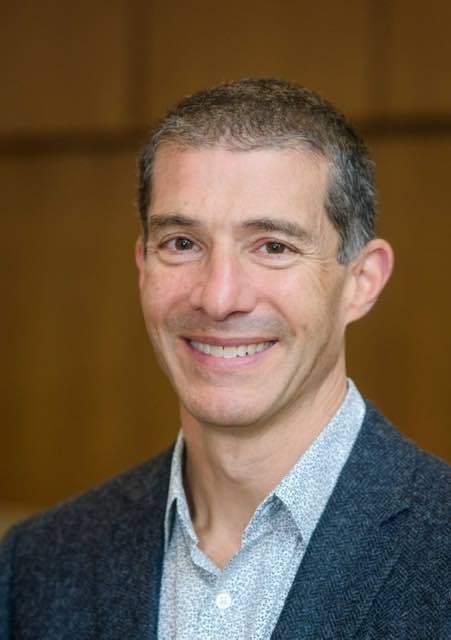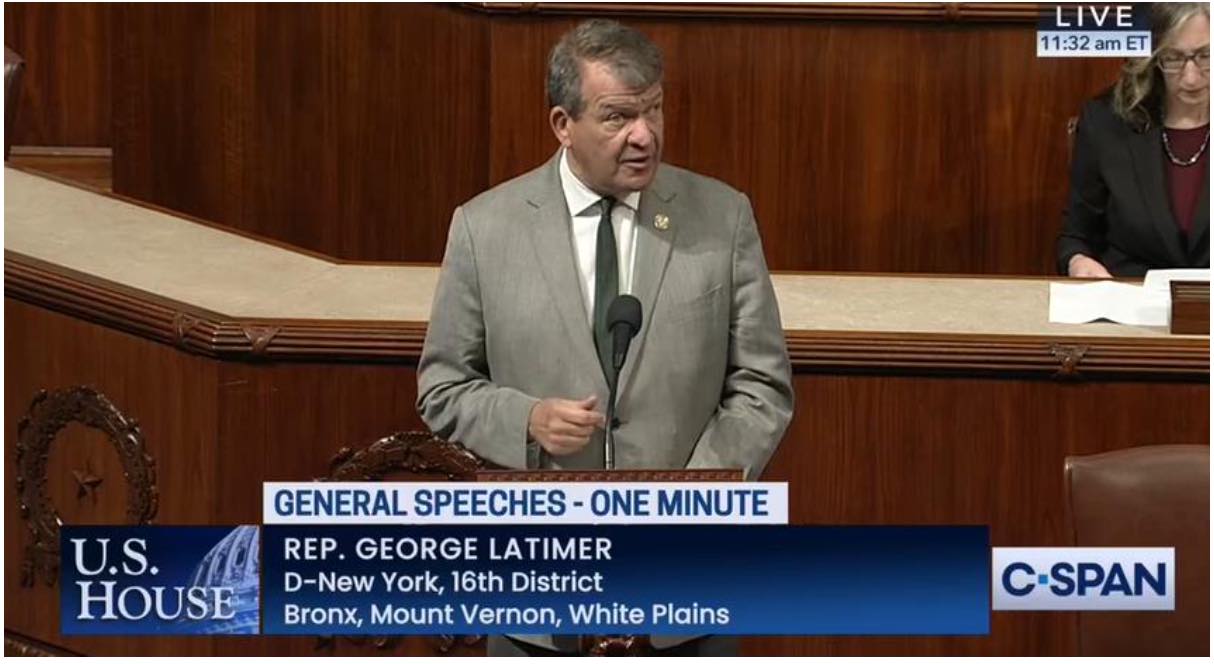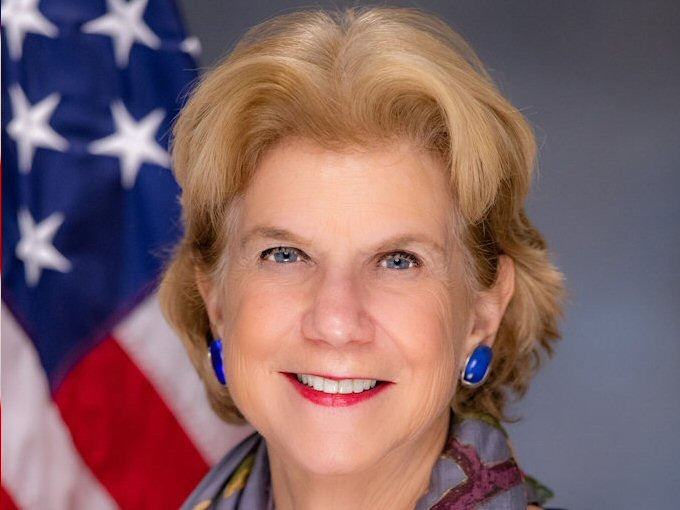A Seasoned Financial Expert and Community Volunteer Steps Up to Serve as Scarsdale Village Trustee
- Details
- Written by: Joanne Wallenstein
- Hits: 2620
 On Tuesday March 18, 2025, Scarsdale will elect a Mayor and three Village Trustees. Scarsdale resident Jason Kofman was selected by the Citizens Nominating Committee for the position of Village Trustee on their slate of candidates. Kofman has strong professional skills and volunteer experience that should serve him well in serving the community.
On Tuesday March 18, 2025, Scarsdale will elect a Mayor and three Village Trustees. Scarsdale resident Jason Kofman was selected by the Citizens Nominating Committee for the position of Village Trustee on their slate of candidates. Kofman has strong professional skills and volunteer experience that should serve him well in serving the community.
See below for his biographical information, professional experience and volunteer positions and his rationale for stepping up now.
How long have you lived in Scarsdale? What brought you here and what do you like about it?
This year marks our 12th in Scarsdale, a community my wife, Kathleen Dunlop, and I chose for its outstanding schools, beautiful green spaces, and welcoming atmosphere. My connection to Scarsdale runs even deeper—my cousins have lived here since 1973, and I grew up visiting them, a tradition that continued into my years living in New York City. From the start, Scarsdale felt like the perfect place to raise our family, and over time it has truly become home. Kathleen and I love being part of this community and it has been an incredible place for our children to grow. Our three kids—Sam, a first-year student at Oberlin College, and Zoe and Nate, now in 10th and 9th grade at Scarsdale High School—have thrived here.
What do you do professionally and how might your skills assist the Board?
I retired a year and half ago to start a second career focused on volunteering and community service. I worked for 30 years at three world-class companies: Goldman Sachs, Oliver Wyman, and Moody’s. In my last role at Moody’s I led a group of 140 people managing operations and strategy for part of the business. As part of the job I led complex projects, reorganizations, and integrations. My experience in group leadership, financial management, project oversight, and strategic decision-making prepared me for the role of Trustee. I understand how to work through challenges, make data-driven decisions, and collaborate with stakeholders—skills that are critical for ensuring effective governance in Scarsdale.
Have you done any previous volunteer work – tell us about it.
Yes, I have been actively involved in several local organizations, starting as a rec softball coach which led to other initiatives:
● Crane Berkley Neighborhood Association: Served on the board for many years, mostly as Treasurer, where I improved our financial management processes.
● Scarsdale Travel Softball: Served on the board for four years, nearly all as Treasurer, where I upgraded financial controls, re-established our non-profit status, and set up a new corporate entity.
● Scarsdale Conservation Advisory Council (CAC): Led the effort for Scarsdale to participate in New York’s Clean Energy Communities program, securing multiple grants for the Village. These are being invested in electric vehicles and other sustainability-linked initiatives.
● Second Chance Foods: I serve as President of the board for this high-performing non-profit organization fighting food waste and food insecurity. In 2024 we rescued over 350,000 pounds of food and delivered over 100,000 meals to those who are hungry.
● Westchester PFLAG: I have attended meetings for four years, initially for personal support and now I attend to provide support to other parents of LGBTQ+ families.
Why did you decide to step up for service on the Board now?
When I retired from my corporate career in mid-2023, it was with the intent of dedicating my time and energy to community service. My involvement with the CAC, Second Chance Foods, and other organizations has been rewarding, but I believe I can contribute even more as a Trustee. I have the time, motivation and experience necessary to make an impact for our village.
In your view, what are some of the challenges that face the Village today?
The Village faces several decisions in the short term that will affect generations of future Scarsdale families. With a $70 million annual budget, it is critical to ensure that funds are allocated effectively for the coming year and for long-term community benefit. There are multiple large-scale capital projects being considered, such as the potential pool renovation, playing field upgrades, and the sanitary sewer system refurbishment. In addition, there are ongoing programs such as street repaving, municipal fleet replacement and Freightway garage repairs which also take up significant financial and planning resources. We have to figure out how to maintain the high level of performance and service provision that residents deserve in a fiscally responsible way.
What are you looking forward to working on?
All of it really. I am keen to help drive successful execution on our major capital projects, to explore ways that the Village can extend its recognized leadership in sustainability and conservation, to provide oversight over the operating budget to ensure that our tax dollars are invested for the benefit of our community, to engage with community members to understand peoples’ priorities, and to make thoughtful, well-reasoned decisions on behalf of all Scarsdalians.
Anything else you wish to add is welcome.
Serving as a Trustee is not an entry-level role—it requires leadership, financial acumen, and strategic thinking. My career, combined with my volunteer work, has equipped me with the skills to serve effectively in this role. I am committed to listening, learning, and working collaboratively to ensure that Scarsdale continues to thrive.
Remember to vote in the Village election on Tuesday March 18 from 6 am to 9 pm at Scarsdale Village Hall.
Congressman Latimer Comments on Tariffs and the U.S. Department of Education
- Details
- Written by: Joanne Wallenstein
- Hits: 1348
 On February 7, 2025 Congressman George Latimer (NY-16) took to the House floor to denounce President Donald Trump’s proposed 25% tariffs on our allies Canada and Mexico. While the tariffs have been delayed by 30 days, the threat of a trade war with our allies and trading partners remains.
On February 7, 2025 Congressman George Latimer (NY-16) took to the House floor to denounce President Donald Trump’s proposed 25% tariffs on our allies Canada and Mexico. While the tariffs have been delayed by 30 days, the threat of a trade war with our allies and trading partners remains.
Here is what he said
“Mr. Speaker, this institution has a choice. To either be an independent, deliberative body, or to rubber stamp foolish policies. What man desires to punish our neighbors, to insult and intimidate our closest ally, Canada, when they have done nothing to warrant this action.
Levying a tariff is an economic tool to be used carefully and strategically, to deal with bad actors on the international scene, who willfully undercut American fair trade. The 25% tariff proposed on Canada is counterproductive and mean-spirited. It’s application to Mexico is equally devastating to us. It will raise prices for the everyday American. When they go to stores, over 1,200 goods will see prices rise with no rise in their paycheck. It will impact American goods sold in Canada and Mexico as they impose retaliatory tariffs to defend themselves.
American families, not foreign leaders, will bear the burden. And the President himself acknowledged that Americans will face some pain. Wall Street and Main Street alike know that agricultural products, cars, steel, gas. All of this is a self-inflicted wound and all unnecessary. This institution needs to listen to Ronald Reagan. Ronald Reagan eloquently warned American politicians not to do this. Thank you and I yield back.”
U.S> Department of Education
And on February 13, 2025, Congressman George Latimer (NY-16) released the following statement after President Donald Trump said the U.S. Department of Education is a “con job” and called for its immediate closure:
“President Trump just said he thinks the Department of Education is a ‘con job’ and should be closed immediately. This is a ridiculous and harmful statement. The Department of Education provides critical funding for low-income schools and resources for students with disabilities. A closure of the Department of Education won’t do anything to bring down costs and will create chaos for students, teachers and families. President Trump seems willing to abandon the public school students of Yonkers, Port Chester, Mt. Vernon, New Rochelle, the Bronx and White Plains.”
In Memoriam: Scarsdale Alum Jo Diamond Samuels
- Details
- Written by: Joanne Wallenstein
- Hits: 1234
 Jo Diamond Samuels SHS 1963
Jo Diamond Samuels SHS 1963
Jo Diamond Samuels, beloved mother, grandmother, and friend, passed away peacefully at home on January 31, 2025. She was the daughter of William and Blanche Diamond and sister of June Diamond. Jo was married to Alan Samuels, and together they raised four loving children: David, William, Elizabeth, and Barbara. She was the proud and loving grandmother of Zachary, Maya, Ethan, and Alex Jade and cherished family to Carolann Samuels, Corey, Bear and Eliana Davis, Stoli Stolnack, and Buji Ibrahim. She also held a special place in her heart for a community of treasured friends.
Jo lived a full and vibrant life. She spent her childhood in Scarsdale, NY, and throughout her life resided in New York City, Boston, Rochester, NY, Loudonville, NY, and most recently, Richmond, MA. She cultivated love, generosity, and care. To know Jo was to feel loved and cared for by her. Jo was passionate about giving back and volunteered for organizations that stood for the causes she believed in. She and Alan traveled the world together, visiting continents across the globe. Jo was an avid reader and lifelong learner, and there was rarely a topic that she wouldn't want to discuss, even with a stranger. She found enjoyment in puzzles, her sweet dogs Lily and Pickles, literature, theater, dance, art, fashion, and a well-set table surrounded by her family and friends.
A graduate of New York University, Jo was a dedicated educator, having taught English and later worked as a library aide. She was committed to her community, volunteered for numerous organizations, and was a lifelong supporter of progressive causes.
Jo will be remembered for her warm spirit and giving heart, her love of the arts, and her unwavering dedication to her family and community. A memorial service to celebrate her life will be held in the spring.
Memorial contributions in Jo's honor may be made to a local or a national reproductive healthcare organization,
National Network of Abortion Funds or the Dana-Farber Cancer Institute
P.O. Box 849168 Boston, MA 02284 or via dana-farber.org/gift
Latimer and Mayer Vow to Fight Executive Order to Pause Federal Funds
- Details
- Written by: Joanne Wallenstein
- Hits: 1299
 Newly elected Congressman George Latimer’s arrival in Washington has coincided with a crisis in government that threatens the well-being of the country and his constituents. In his first week in office, President Trump signed an executive order to pause payments of federal funds, jeopardizing Medicaid funding to the states, funding to non-profits, hospitals, meals on wheels and school lunches just to name a few of the programs that are affected.
Newly elected Congressman George Latimer’s arrival in Washington has coincided with a crisis in government that threatens the well-being of the country and his constituents. In his first week in office, President Trump signed an executive order to pause payments of federal funds, jeopardizing Medicaid funding to the states, funding to non-profits, hospitals, meals on wheels and school lunches just to name a few of the programs that are affected.
We spoke to Latimer on the evening of January 28, 2025 when he expressed his determination to fight these efforts using whatever means are available. Latimer said, “The illegal action to halt funding that was legally approved by the Federal government is an attempt to impose an ideology on America. The pain and suffering will cause great hardship, raise prices, increase homelessness, hurt veterans, jeopardize education, and more. It’s indefensible.” He added, “The President does not have the power to freeze these payments. It is without just cause.”
Though Latimer acknowledges that Democrats are in the minority in Congress, he is determined to fight these orders with whatever tools are available.
Latimer reported that NY Attorney General Tish James had filed a lawsuit to challenge the order which was joined by additional states. On Tuesday, a federal judge enjoined the spending freeze until Monday February 3, 2025.  Latimer was sworn in on January 26, 2025 in Rye.
Latimer was sworn in on January 26, 2025 in Rye.
On Trump’s order to end birthright citizenship, Latimer said, “Trump’s order is clearly illegal. Birthright citizenship is guaranteed in the 14th amendment of the U.S. Constitution.”
What to do? Latimer said, “I am not sitting here and saying woe is me. We are drawing public attention to the actions. We think that even pausing benefits and programs can interrupt and possibly stop these programs.”
Why is Trump taking such dramatic actions? Latimer explained, “Trump is intending to use this as leverage to get his deportation policy through – for those who won’t help him do his dirty work – he will force this by withholding their Medicaid money. He wants 12 million people to be deported.”
He added, “None of this is a surprise to me. People have seen him in New York for years and know his tactics.” Latimer said, “The only office in government Trump has held is President. He is a critic of government and want to deconstruct it.”
What can citizens do? Latimer urged residents to speak up. He said, “Trump is not impervious to public pressure. When enough people who are on his side hear concerns the pressure will come back on him. If you disagree, let people know. Use your voice.”
State Senator Shelley Mayer also expressed concern about the pause. On Tuesday January 28, 2025 she said , “I’m deeply disturbed by President  Trump’s unauthorized ‘pause’ of appropriated federal funds. It is already causing distress, confusion, and havoc in New York State, as payments that flow through to New York institutions are impacted. So far we have heard that online systems through which Medicaid payments are received by New York State were blocked and that non-profits reimbursed through federal funds are at great risk of non-payment for services they provide. These include hospitals, Head Start programs, veterans’ programs and more – services New Yorkers depend on, and our Congressmembers and Senators fought for and were enacted into law.
Trump’s unauthorized ‘pause’ of appropriated federal funds. It is already causing distress, confusion, and havoc in New York State, as payments that flow through to New York institutions are impacted. So far we have heard that online systems through which Medicaid payments are received by New York State were blocked and that non-profits reimbursed through federal funds are at great risk of non-payment for services they provide. These include hospitals, Head Start programs, veterans’ programs and more – services New Yorkers depend on, and our Congressmembers and Senators fought for and were enacted into law.
“Credit to New York Attorney General Tish James and other state Attorneys General, who promptly filed suit challenging this order. It appears a federal judge briefly delayed the President’s order. We cannot stay silent in the face of such action by the President; I appeal to my Republican Federal colleagues to use every tool at their disposal to stop this effort.
“It’s unacceptable and cannot stand.”
Kudos to Two Local Grads
- Details
- Written by: Joanne Wallenstein
- Hits: 1863
 Izzy Motokoff and Alexis Chan developed SteadyScribTwo local graduates are making news this week. Read below about Edgemont's Alexis Chan who designed a new product and Rachelle Gage who published her fourth book:
Izzy Motokoff and Alexis Chan developed SteadyScribTwo local graduates are making news this week. Read below about Edgemont's Alexis Chan who designed a new product and Rachelle Gage who published her fourth book:
Alexis Chan, a 2020 graduate of Edgemont High School and a 2024 graduate of Northwestern, has just released a new product. Chan majored in biomedical engineering and worked with another student at school to develop SteadyScrib. SteadyScrib is a comprehensive pen set that includes a magnetic pen, pairing clipboards, and two magnets to secure paper to help people with Parkinson’s to write.
It’s the first writing utensil designed for people with Parkinson’s Disease.
The product was inspired by Chan’s co-founder Izzy Mokotoff’s weekly letter exchanges with her grandfather Pops which were cut short by his Parkinson’s symptoms. Now, in his loving memory, Co-Founders Alexis Chan and Izzy Mokotoff have our sights set on helping millions of others with Parkinson’s disease.
SteadyScrib is available for purchase on the company’s website. The Co-Founders are actively seeking opportunities to collaborate with healthcare providers, support groups, and advocates to extend their impact and bring this innovative solution to more individuals in the Parkinson’s community.
The design is now officially patented. Izzy and Alexis were named to Forbes 30 under 30 Chicago and have been featured on many news channels including NBC News, ABC7, and recently Good Day Chicago.
Learn more at www.steadyscrib.com.
We're Not Ok
SHS 2012 grad Rachelle Gage recently published her fourth book, and her first that is out of the children’s book Rachel Gage recently published her fourth book. world. The book is called We’re Not OK: Jewish and Ally Experiences Post 10/7 and brings together personal anecdotes, poems, and letters following the 10/7 attack on Israel. The words are taken from social media platforms and illustrated by Gage. Some of these voices are those of mothers sharing their fears for their visibly Jewish children, and students writing to their universities with concerns about the pro terror encampments.
Rachel Gage recently published her fourth book. world. The book is called We’re Not OK: Jewish and Ally Experiences Post 10/7 and brings together personal anecdotes, poems, and letters following the 10/7 attack on Israel. The words are taken from social media platforms and illustrated by Gage. Some of these voices are those of mothers sharing their fears for their visibly Jewish children, and students writing to their universities with concerns about the pro terror encampments.
Gage says, “As a proud Jew and granddaughter of an Auschwitz survivor, I was impacted firsthand by the rise of antisemitism in the silencing of Jewish voices. I knew I had to amplify these voices, and published my recent book, which includes submissions of various perspectives through personal anecdotes, poems, and letters. This collection and other similar projects are so important in this time where Jewish voices are being silenced, and our history erased. While the title states We’re Not OK, the takeaway message is that we’re not alone. I hope that my book not only raises the authors’ voices but provides comfort to others who have felt isolated for these past two years.”
Find your copy on Amazon or Barnes and Noble here:










